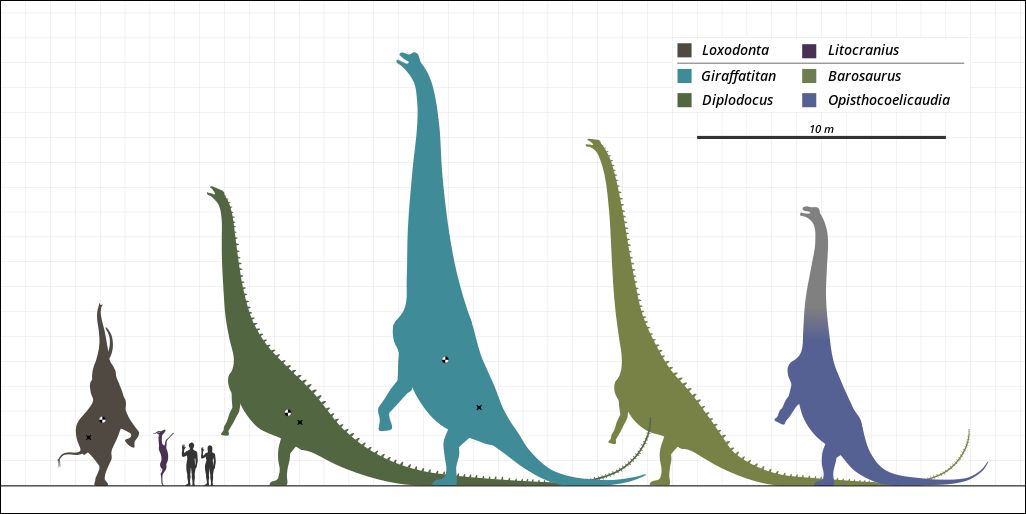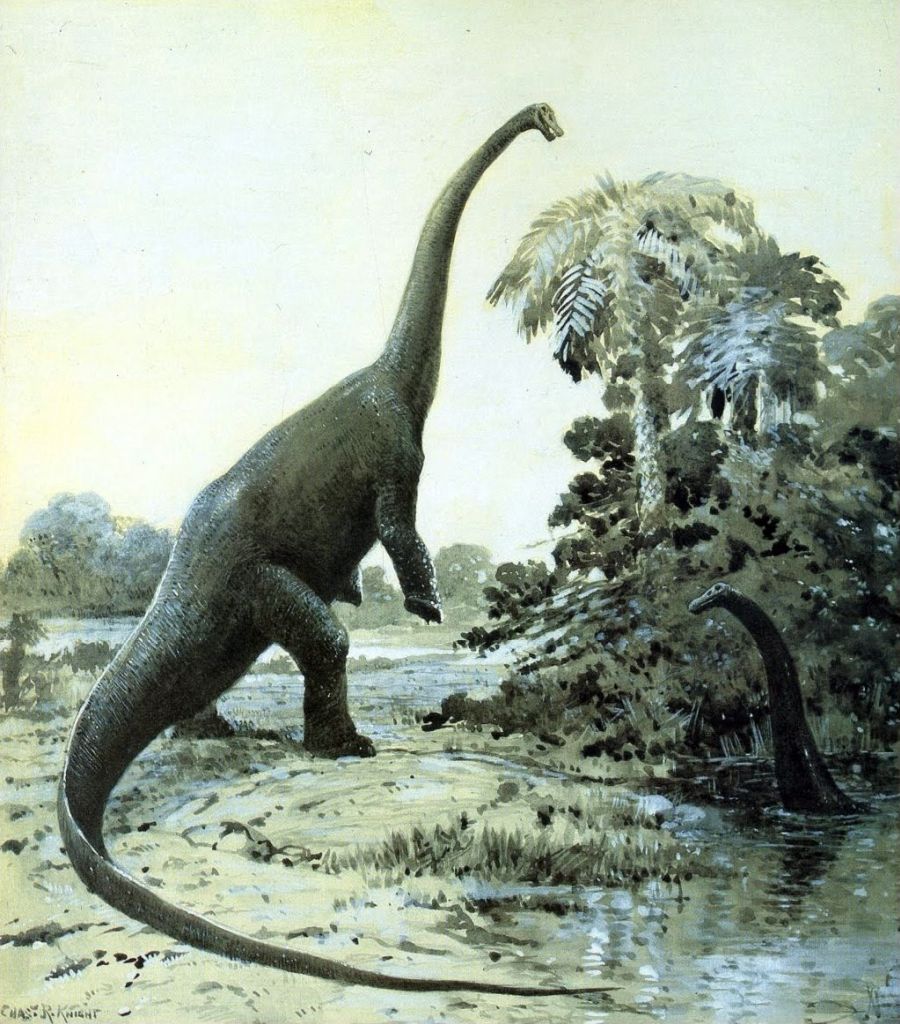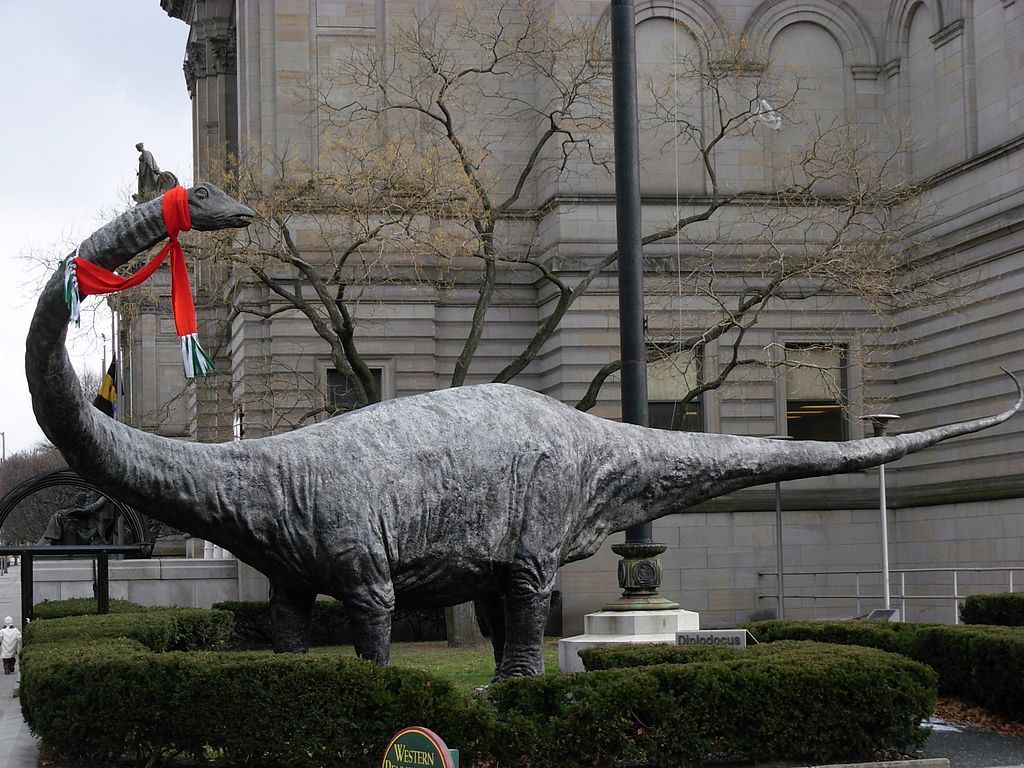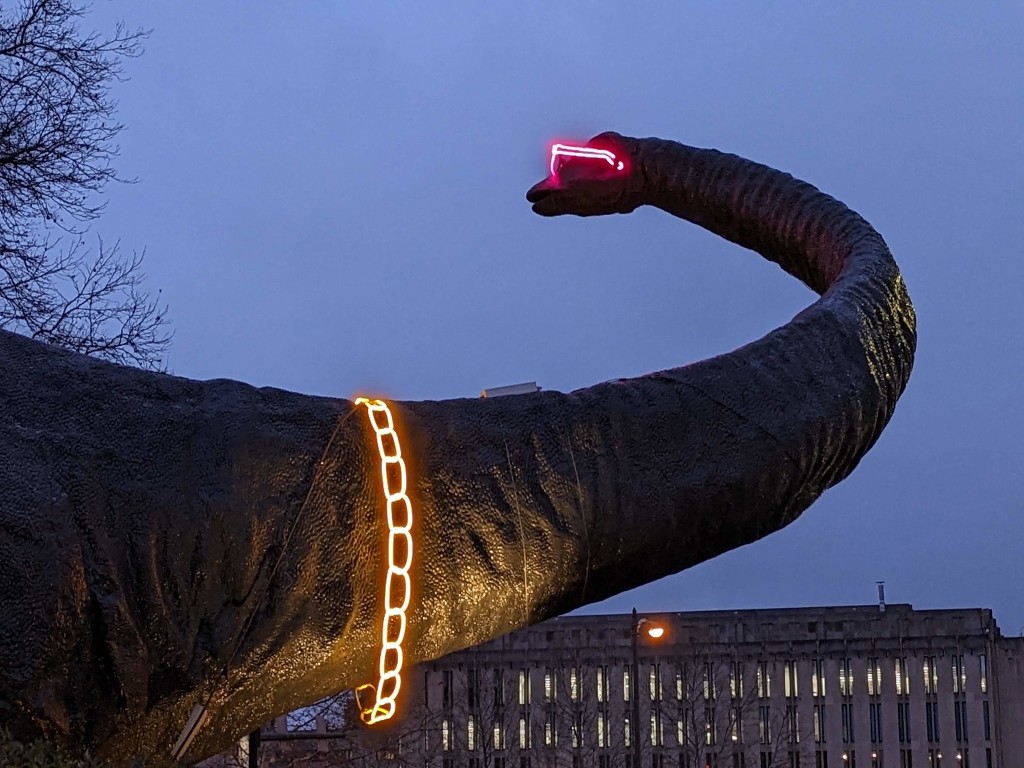
10 January 2024
Today I found an illustration that’s full of surprises showing six animals in the rearing up position. With two humans for scale the animals are: an African elephant, a gerenuk, and four Sauropoda dinosaurs: Diplodocus, Giraffatitan, Barosaurus, and Opisthocoelicaudia. The black and white dot on the elephant and dinosaurs indicates the center of mass (COM) for balance; the tiny black square is the location of the hip socket.
The elephant and gerenuk (giraffe gazelle) both rear up to reach food but for many decades the idea that Sauropods lifted themselves from the ground was considered scientifically inaccurate.
This 1907 illustration of Diplodocus by Charles Robert Knight is so noted on Wikimedia Commons.


The note says the picture is not factual because “Sauropods were terrestrial.”
Did Sauropods always keep all four feet on the ground? They ate tall plants, two examples of which still live today in California: coastal redwoods and giant sequoias. It makes sense they would have to rear up to reach them.

And most Sauropods had very long tails to use as props the way woodpeckers do.

Put it all together with a lot more scientific information and the rearing up makes sense. Here’s the description on the illustration, formatted for clarity, that explains why Sauropods were better adapted for rearing than many modern mammals, such as elephants:
— Wikimedia Commons: Description of Sauopods Rearing illustration
- Sauropod necks and torsos are lightened because of an extensive air sac system which, combined with long, muscular, and dense tails, helps shift the centre of mass (COM) backwards, closer to the hip socket in some sauropod species.
- Some sauropods have retroverted pelves which might have allowed the legs to maintain greater functionality when rearing.
- [Bones in] the anterior part of the tail suggest flexibility, the tail being able to serve as a prop when in a tripodal posture.
- The hip socket allowed for a large range of motion, more than needed for normal quadrupedal walking.
- The wide strongly flared pelvis was thought to further aid stability in a tripodal posture.
Specifically for Dippy, “The Center of Mass (COM) of Diplodocus is estimated to be very close to the hip socket. This makes prolonged rearing possible and does not require much effort to do it. Combined with its long, massive tail acting as a prop, it was also very stable. Mallison found Diplodocus to be better adapted for rearing then an elephant.”
The description also points out that Giraffatitan, the second dino from the left, would have a hard time rearing. His COM was too far from his hip socket and his tail was short.
So it’s likely that Dippy reared up on his hind legs and could do so for hours while he browsed the trees like a deer.

Way cool, Dippy!

(credits are in the captions with links)